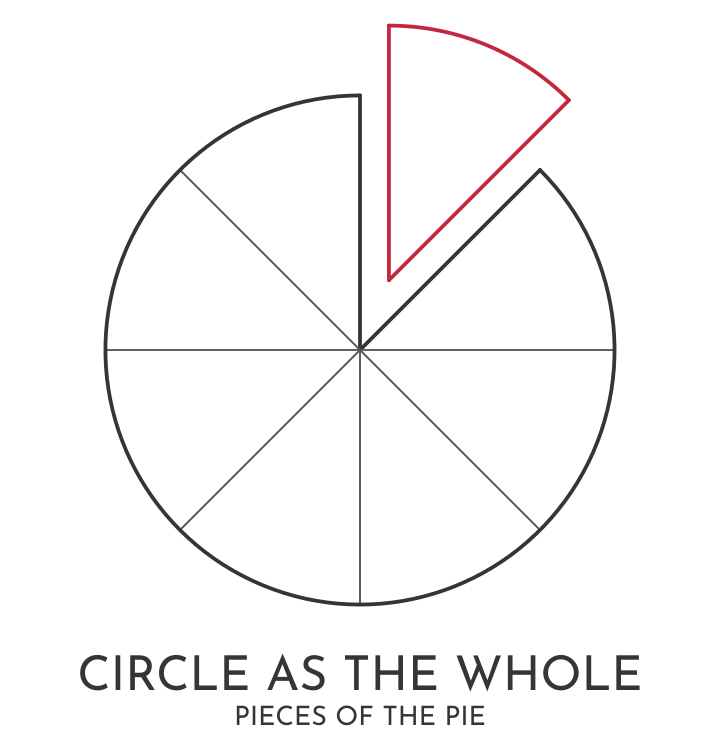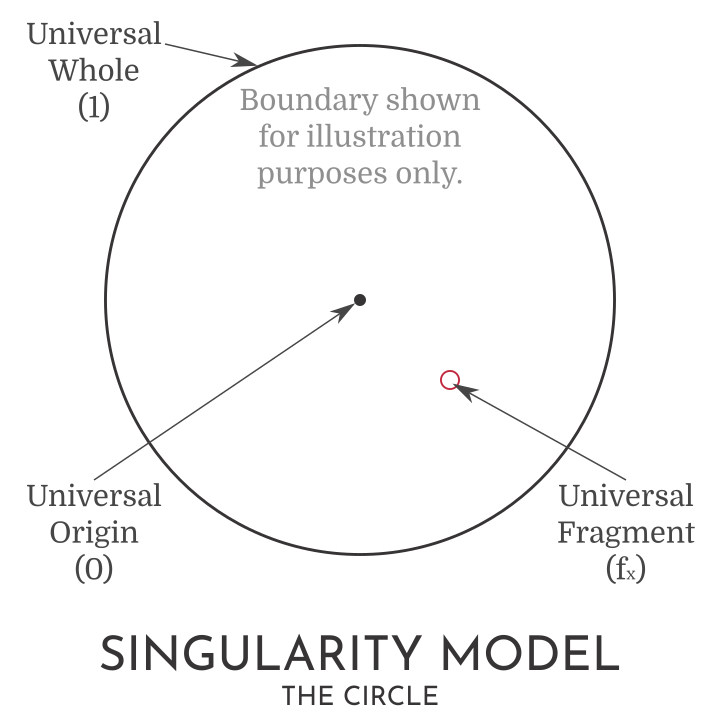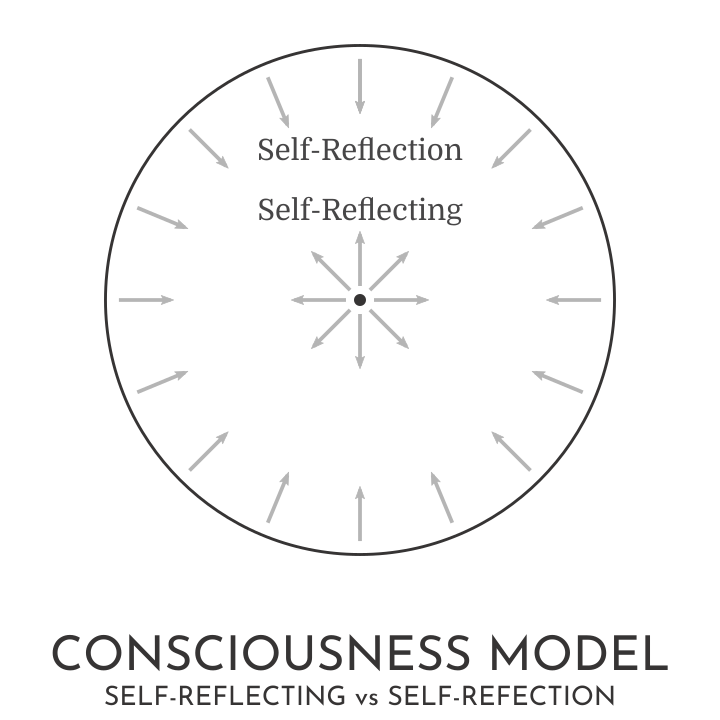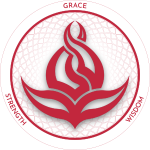The Circle can be used to describe and represent many aspects of Universe/Creation, the most prominent of which are,
- The Circle can represent Singularity.
- The Circle can represent the Universe.
- The Circle can represent the Whole.
- The Circle can represent Duality.
- The Circle can represent Consciousness.
- The Circle can represent the Individual.
- The Circle can represent Time.
- The Circle can represent Infinity.
The Circle As Singularity
On its own, the Circle is “One and Only One”.
The Circle As The Universe
The Universe is a self-contained Whole, which the boundary of the Circle represents. But as many other geometric shapes can also be considered self-contained wholes, the Circle possesses a unique quality, since the distance from its centre is equal to all positions along its boundary. The term for this distance is of course, the radius.
Now, if this radius is of Infinite length, then not only is the Circle of Infinite size, but the centre of this Circle can then be placed anywhere within the Circle and still be the centre of this Infinite Circle.
How is this possible?
Because no matter where the centre is positioned, it is always an equal, Infinite distance to the boundary, in this case, no boundary. Which by definition, is a Circle, albeit, an Infinite Circle.
In three-dimensional space, a sphere of Infinite radius describes the same situation.
The Circle As The Whole
The Circle can be divided into pieces, but these pieces together create the whole Circle.
Similar to the way pieces of a pie make up the whole pie. However, each piece of pie is also a self-contained whole.
The Circle As Duality
As was mentioned in the post, Foundation Of Duality, the origin of the Circle cannot be detached from the Circle as a whole, otherwise the Circle ceases to exist.
The Circle is the Origin and the Origin is the Circle, they are simply two aspects of the same thing. It is this indivisible relationship that shows the Dualistic nature contained within the Circle itself.
The Circle As Consciousness
The diagram above represents what the terms Self-Reflecting and Self-Reflection indicate in the context of Consciousness.
Self-Reflecting denotes a reflection expressing from the Source/Centre of the Circle out toward the Boundary.
Self-Reflection illustrates a reflection coming back from the Boundary toward the Source/Centre of the Circle.
In this instance, the Boundary refers to the temporally finite boundary states created by manifest reality.
This process, in a very basic manner, describes the Reflecting nature of Consciousness within itself.
The Circle As The Individual
An individual Circle is “One and Only One”, a self-contained whole or an Indivisible Duality. The post, Dualistic Counterparts, explores this “Interesting Observation”.
The Circle As Time
The Centre of the Circle can depict the Moment, while the Boundary of the Circle portrays Eternity.
Thus, the Moment is the source of Eternity, as Eternity is expressed from the Moment and contained within the Circle itself, is all of Time.
The Circle As Infinity
Consider the Circle as a regular polygon with Infinite, equal length line segments. Reducing the resolution of this polygon creates the standard regular polygons, which can then be deemed approximations of the Circle.
A polygon is a closed, two-dimensional shape, bounded by three or more straight line segments.
A regular polygon is a polygon where all the line segments are of equal length and all the internal angles are of equal magnitude, as presented in the diagram below.
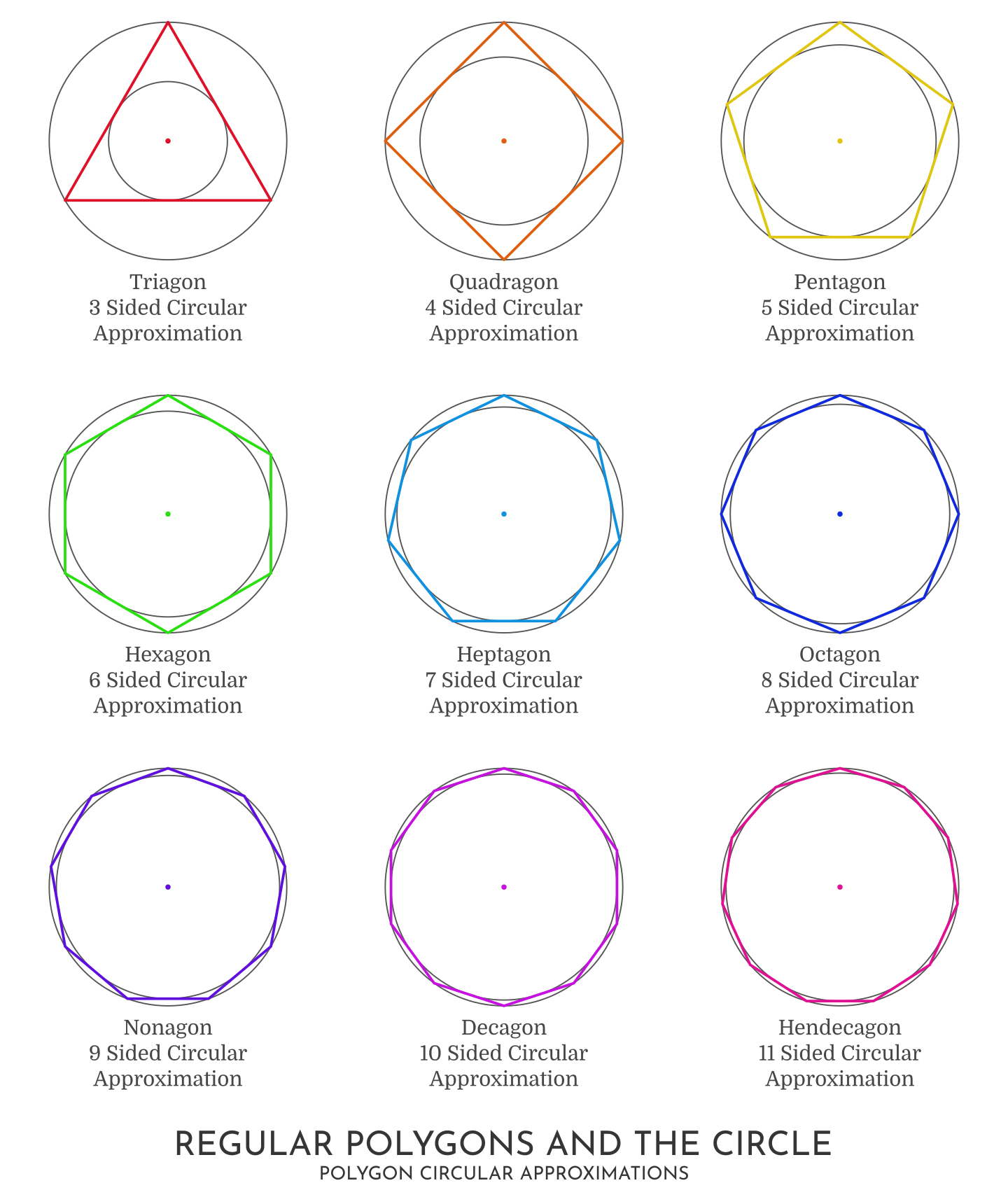
Standard regular polygons are shapes such as a Triagon (Equilateral Triangle), Quadragon (Square), Pentagon, Hexagon, Heptagon, Octagon, Nonagon, Decagon.
As the number of line segments is increased, the polygon more closely approximates and resembles the Circle. Increasing the number of line segments to Infinity, then gives the Circle its true form.
At this stage though, these line segments are no longer actual line segments, but instances of Singularity. Because the distance between the two end points of each line segment has been reduced to zero.
So essentially, the Circle can be thought of as an Infinity Polygon or “Infinagon?”.
The most fundamental approximation of the Circle as a regular polygon, is the Triagon. This is because three is the minimum number of line segments possible for a polygon.
There are two ways that a regular polygon can approximate a Circle.
- Inscribed Circle – Where the Circle is tangential to each line segment of the polygon at its midpoint. This has the Circle within the polygon.
- Circumscribed Circle – Where the Circle intersects each of the vertices of the polygon. This has the polygon within the Circle.
The Triagon, being the most fundamental approximation of the Circle, presents the situation that the size difference between its Inscribed Circle and its Circumscribed Circle is the most extreme out of all the regular polygons. Increasing the number of line segments of the polygon, has the diameter of the two Circles converging closer together.
Then, upon reaching an Infinite number of line segments, the Infinity Polygon, the Inscribed Circle and the Circumscribed Circle all attain the same diameter. All become the same Circle. Could they even be regarded as, a “Wholly Trinity”?
Extending this comparison into three-dimensional space has the Platonic Solids, or more specifically Geodesic Polyhedra and Goldberg Polyhedra, portray the Sphere in a similar way.
